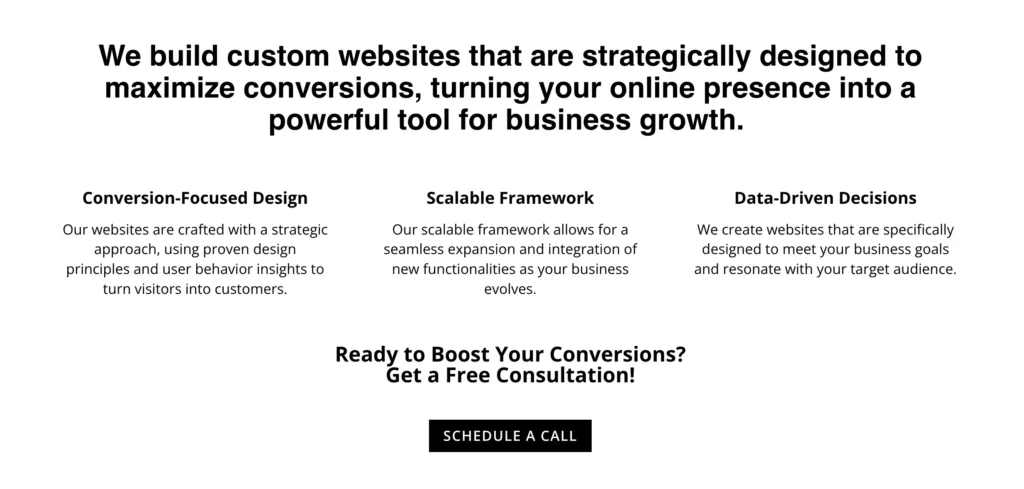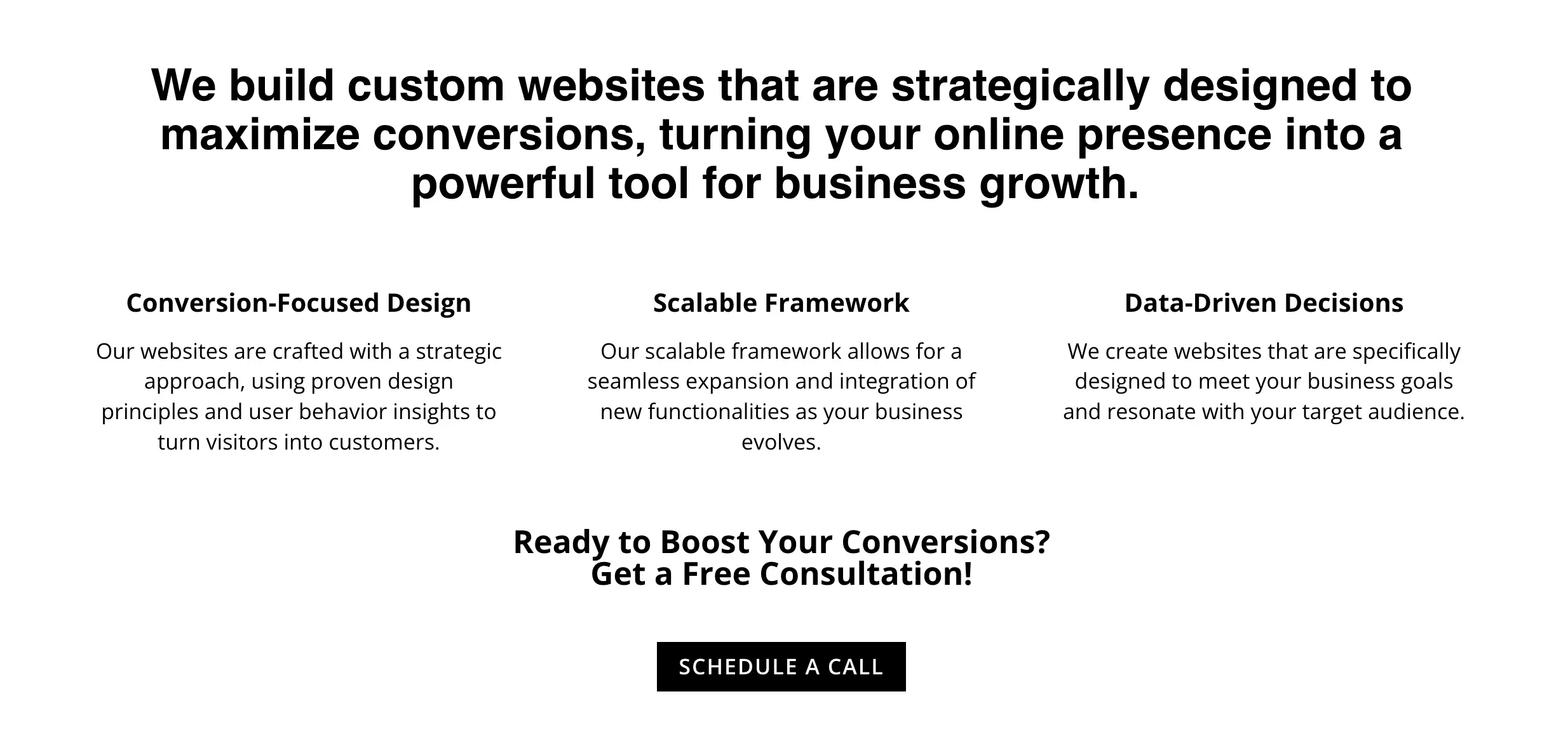The second section on our homepage is what we like to call the Value Proposition Section– basically, it holds your value proposition statement for your business.
A value proposition statement is a clear, concise description of the unique value that a product, service, or brand offers to its customers. It explains why a customer should choose your product or service instead of a competitors by highlighting the specific benefits and solutions you provide.
A strong value proposition statement typically includes:
The target audience: Who the product or service is for.
The problem or need: What specific problem or pain point the product or service solves.
The solution: How the product or service solves the problem or meets the need.
The unique benefits: What differentiates the product or service from competitors and why it’s the best choice.
Let’s take a look at our current value proposition section:

Our main audience is business owners who already have a website, but are “struggling to make their business stand out online” as we had mentioned in our hero section, but also worry about conversion rates. So we’re focusing on the key phrase “conversion” in our value proposition statement:
We build custom websites that are strategically designed to maximize conversions, turning your online presence into a powerful tool for business growth.
We support this by providing three “solutions” to the problem of conversion by stating we have “conversion focused design,” a “scalable framework,” and we make “data-driven decisions.”
We discuss each as a unique benefit in the smaller paragraph underneath the benefit.
End it with a Call to Action
The best way to end a value proposition section is to add another Call to Action (CTA)!
We want it to target our MAIN offer– yes, we realize we are just reiterating ourselves from our hero section to this one, but remember that repetition is key here: if they didn’t click it the first time, we want to guide them to click it here.
By ending with a CTA, you capitalize on the interest generated by the value proposition. It prompts users to act while they are still engaged and motivated, reducing the likelihood of them leaving the page without taking any action!


